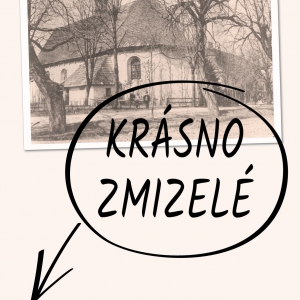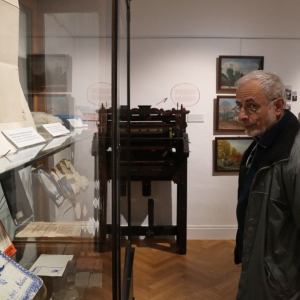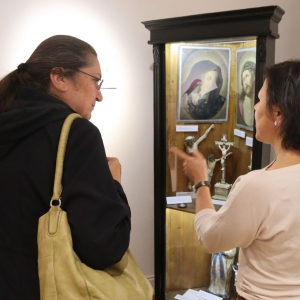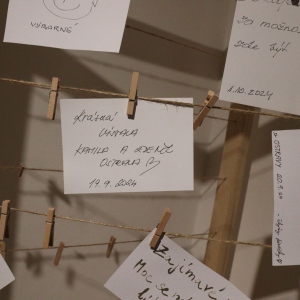
Accept our invitation to the exhibition "The Disappeared Town of Krásno," which explores the rich history and present of the once-independent town of Krásno, which became part of Valašské Meziříčí 100 years ago. You can visit the exhibition from September 14, 2024, to April 20, 2025, in the two main exhibition halls of the Kinský Castle in Valašské Meziříčí. The exhibition will also include interesting accompanying programs. The first of these, titled "Tradesmen Through the Lens of Time I," will take place on Saturday, September 21, starting at 4:00 PM.
A FEW INTERESTING FACTS FROM HISTORY
As historical records indicate, the union of Valašské Meziříčí and Krásno in 1924 was not the first attempt to merge the two towns. A similar effort was made as early as the mid-16th century. The powerful Jan of Pernštejn purchased the Rožnov estate with the towns of Rožnov and Krásno in the 1530s, and a decade later, documents already referred to Krásno as a suburb of Meziříčí. However, the people of Krásno did not accept the merger with Meziříčí, and when the Žerotín family became their new lords in 1548, they petitioned King Vladislaus II of Hungary to restore their original rights and independence.
After that, calls for a merger fell silent for a long time and only began to resurface loudly after the establishment of independent Czechoslovakia. The primary argument for merging Valašské Meziříčí and Krásno was that the two towns had effectively become a single entity, with most of the administrative offices and schools located in Meziříčí, while Krásno was home to industrial and agricultural production. The preliminary resolution for the merger was initially approved by representatives of both Krásno and Valašské Meziříčí. Although the initial enthusiasm soon faded, the merger continued to take shape. In May 1919, the town council of Meziříčí submitted a request to the Ministry of the Interior to annex Krásno, and although the residents of Krásno vehemently protested, Meziříčí persisted in its request.
The protest by Krásno culminated in a journey by the mayor of Krásno and his deputies to Prague to meet with the Minister of the Interior. The minister recognized the legitimacy of their demands and rejected the request from Valašské Meziříčí. However, in the autumn of 1922, the idea of merging the two towns gained new momentum. At the same time, a political shift was brewing at the Meziříčí town hall, where the work of mayor Chrastina and some council members had been under criticism for some time. This situation persisted until January 6, 1923, when mayor Chrastina resigned, and on January 22, 1923, Bořivoj Weltrubský was elected as the new mayor. He immediately addressed the sensitive issue of merging the two towns, but not in the original 'offensive spirit towards Krásno.' Instead, he proposed a merger based on mutual agreement, as a union of two equal entities, whose merging would bring about political, economic, and financial unity. Although disputes over the name persisted, nothing stood in the way of the merger. And so, for a full century, the two towns have shared a common fate.
EXHIBITION
This year marks the 100th anniversary of the merger of Krásno and Valašské Meziříčí into a single entity. The Museum of Moravian Wallachia region has prepared a major exhibition for you, which, through unique exhibits, fascinating information, and playful interactivity, presents the rich cultural and artisan-industrial history and present of the former town of Krásno. Though rooted in ancient foundations, its legacy continues to inspire today. As Krásno has also been a great source of inspiration for artists, the exhibition features more than thirty artworks inspired by the town and its charming corners.
ACCOMPANYING PROGRAMS
The exhibition will also include a series of accompanying programs. The first one will take place on Saturday, September 21, at 4:00 PM. During the discussion "Tradesmen Through the Lens of Time I," you can look forward to a tasting of delicious Dadák coffee and a guided tour of the exhibition with its curator, historian Ivana Spitzer Ostřanská. We will keep you informed about other upcoming events.













